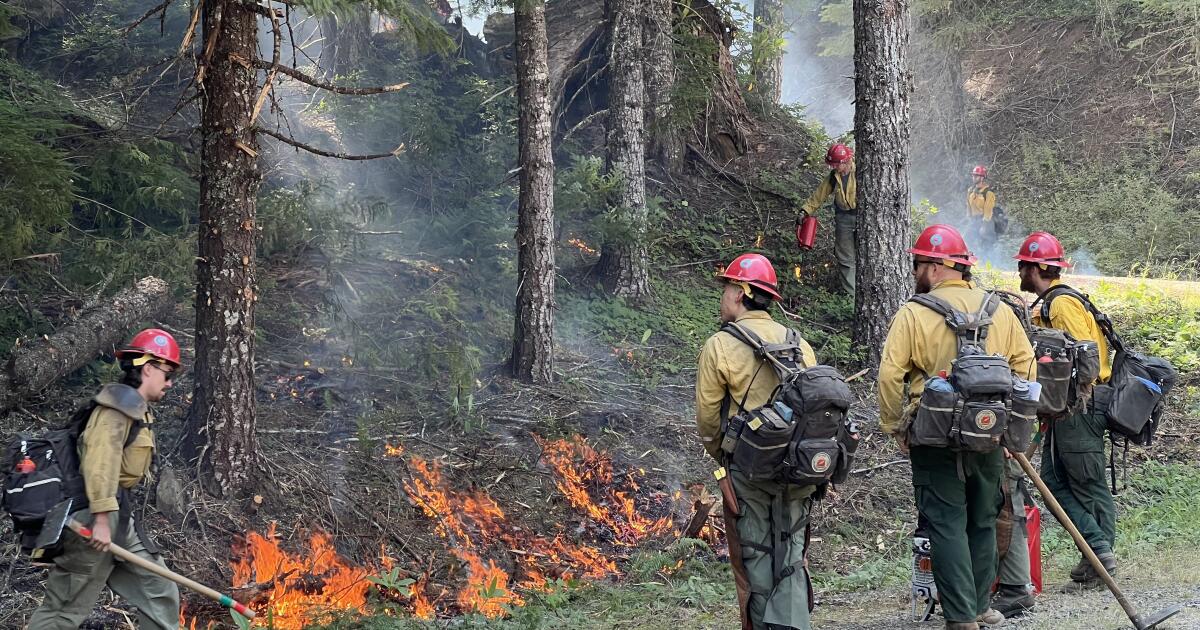Good morning. It’s Monday, Aug. 19. Here’s what you need to know to start your day.
Newsletter
You’re reading the Essential California newsletter
Our reporters guide you through our biggest news, features and recommendations every morning
You may occasionally receive promotional content from the Los Angeles Times.
Hotshot crews are keeping busy in this early and active fire season
When a wildfire grows dangerously large, the U.S. Forest Service’s hotshot crews step in.
With hand tools, chain saws and sometimes dozers, the elite firefighters clear brush, dig out lines and set strategic burns to deprive advancing flames of fuel. When you see news headlines on what percentage of a fire is contained, hotshots are among those doing the hard work to contain it.
After a couple of mild fire seasons, hotshot teams across California and other Western states are keeping busy this summer.
To learn more about what they’re up against, I spoke with Dan Mallia, superintendent of the Redding Hotshots. When we spoke, he and his crew were on Day 10 of a 14-day assignment in Oregon, where they’d been dispatched to aid with the Willamette Complex fires, which have scorched thousands of acres.
“Large-fire support is what we do really well,” Mallia told me. “That’s kind of our bread and butter.”
The Redding Hotshots have worked some of the biggest and deadliest blazes in state history, including the August Complex, Dixie and North Complex fires, plus the recent and still-active Park fire. He and his team have had a firsthand look at the devastation caused by those blazes.
“You do a lot of self-reflection, like, ‘What else could we have done? Did we do enough?’ I always feel like we have,” Mallia said. “We fight fire aggressively, but … the safety and well-being of my crew is No. 1.”
Letting the fire ‘do its thing’
Members of the Redding Hotshots, shown in Oregon, have worked some of California’s largest wildfires.
(Dan Mallia / U.S. Forest Service)
Mallia said this season got off to an early start, especially compared with the previous two seasons. Those were tempered by back-to-back wet winters as well as last year’s Hurricane Hilary, which brought notable rain, dousing the mountains and tamping down fire risk at a pivotal moment in the season.
The typical hotshot assignment is 14 days straight, working a fire “like a Swiss Army knife,” Mallia said. Then crews get three days off before it’s back to the forest.
The latest assignment was the fourth “physically and mentally hard job” in a row for Mallia’s crew.
To meet the moment, it’s essential for the crew to eat well and get as much sleep as possible, he said. And maintaining a healthy perspective is also helpful.
“There’s a lot of times where, no matter what we do, the fire is … going to do what it wants to do,” Mallia said. “And no amount of air tankers and hotshot crews and engines and bulldozers are going to stop it. Those are the times where we need to get out of the way of it, let it do its thing.”
The need for good fire
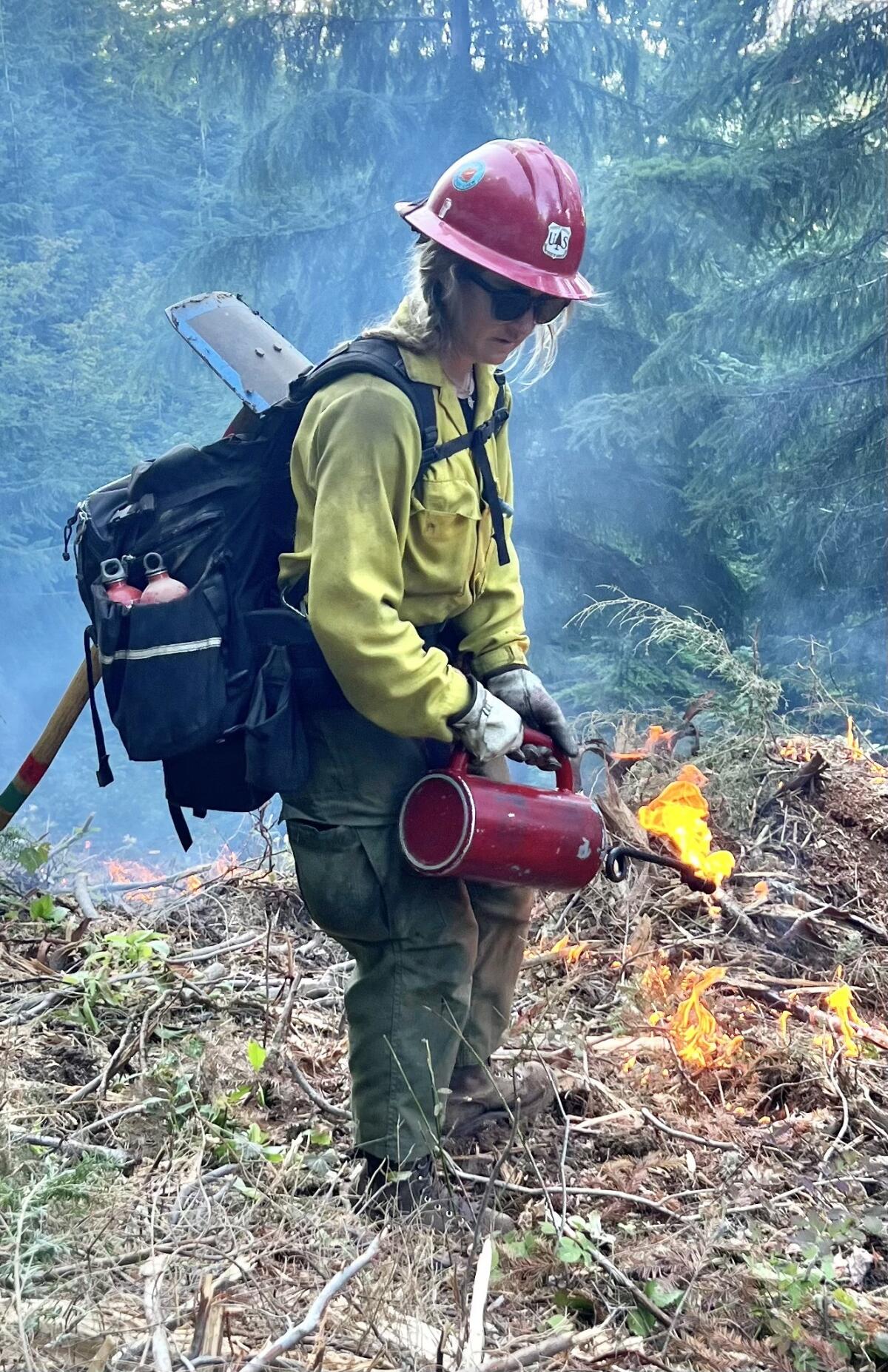
Firefighter Jessica Westbrook uses a drip torch while on assignment on the Willamette Complex fires last week.
(Dan Mallia / U.S. Forest Service )
The increasing severity of wildfires in the West is something wildland firefighters have faced in the last several decades as some blazes have surpassed 1 million acres.
“Talking to some of our senior leaders … those numbers are unfathomable,” Mallia said. “A big fire to them was like 10,000 acres back in the ’60s and ’70s.”
Global warming is undoubtedly playing a role, he told me. On top of that, fire and forest officials are reckoning with roughly a century of firefighting policies that have upped the risk that fires will be more destructive. Burning was long hindered, allowing unchecked plant growth.
“We’ve been so good at putting fires out when they’re small that we’ve changed the makeup of what a healthy forest looks like,” Mallia said. “That’s definitely making things harder when conditions are right for fire to grow … and that excess fuel in the fire area [makes it] tougher on us to suppress the fire.”
In response, state and federal agencies have been embracing longtime Indigenous practices of fire management that recognize fire as a natural force that helps balance forest ecosystems.
“I’m a huge proponent of prescribed fire,” Mallia said. “I’ve got to see the effects of a severe wildfire moving into an area that’s been treated and watching that fire behavior slow down to almost stop and give us an opportunity to [contain] that fire.”
“I think one of the big notions is that fire is bad, [and] when it takes out communities,” he said, that’s “absolutely” true. “But there’s a lot of times where fire is really good.”
Today’s top stories
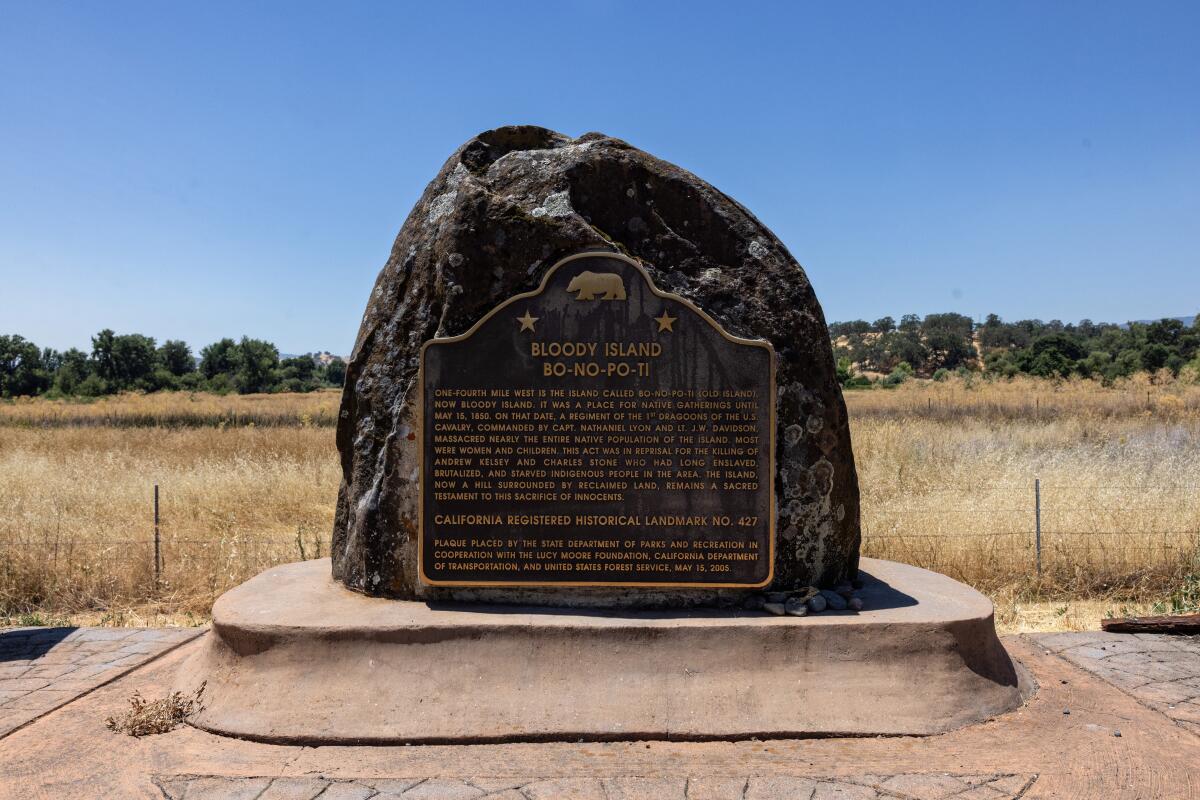
A plaque marks the site of the Bloody Island Massacre in Clear Lake, Calif., on May 15, 1850.
(Jason Armond / Los Angeles Times)
California culture
2024 election
Law enforcement and policing
Government and policing
More big stories
Get unlimited access to the Los Angeles Times. Subscribe here.
Today’s great reads
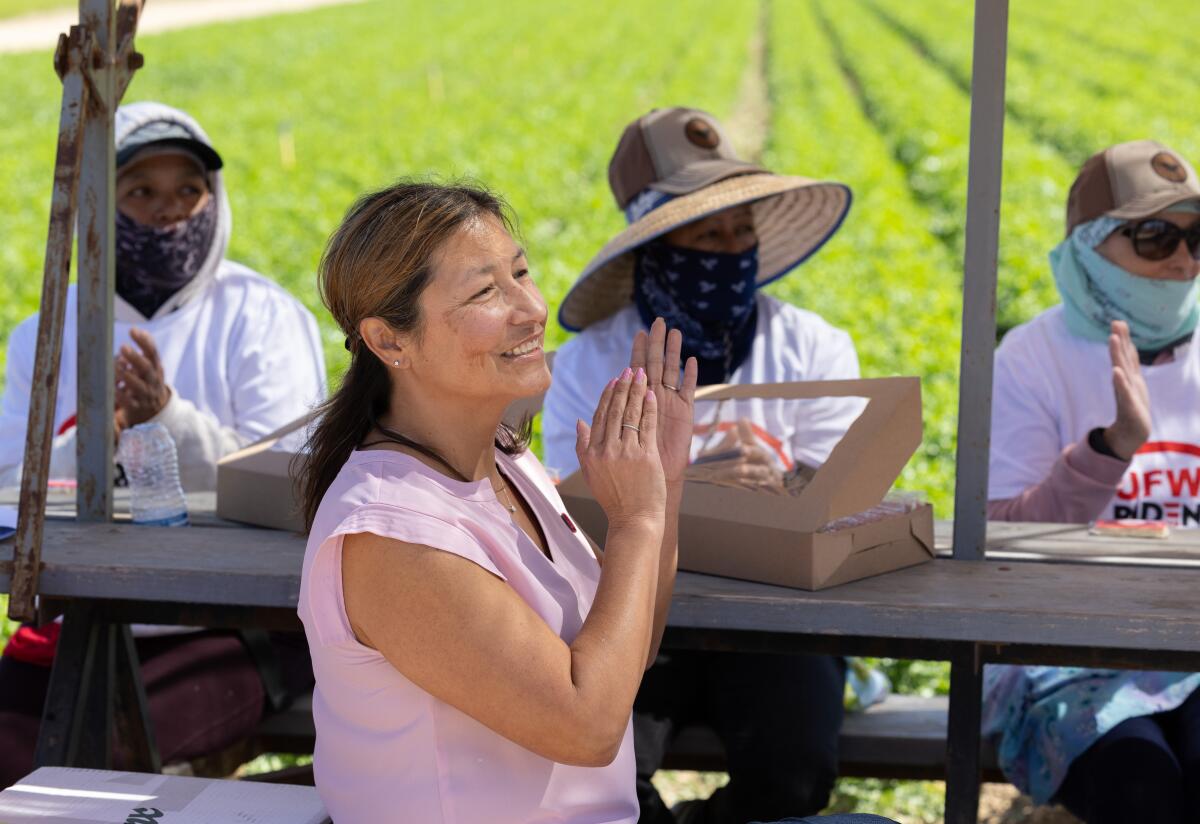
Julie Chavez Rodriguez meets with farm workers at Muranaka Farm in Moorpark on Sept. 26, 2023.
(Myung J. Chun / Los Angeles Times)
Her grandfather, Cesar Chavez, taught her about activism. Now Julie Chavez Rodriguez is running Kamala Harris’ campaign. “The origin story of the Latino voter literally begins in her bloodline,” one expert told The Times. Can Rodriguez win over Latinos for Harris?
More great reads
How can we make this newsletter more useful? Send comments to essentialcalifornia@latimes.com.
For your downtime
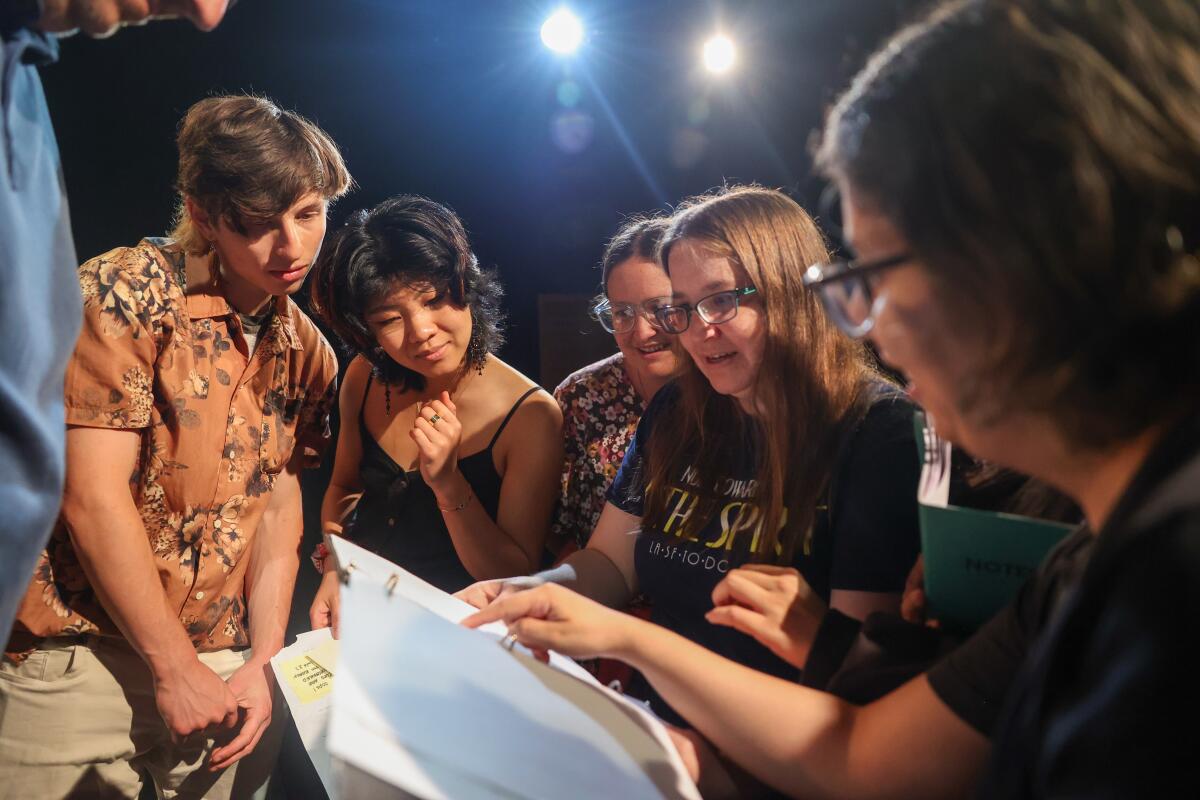
Audience members look through the script for the next clue during “Escape From Godot” at L.A.’s Moving Arts Theatre.
(Michael Blackshire / Los Angeles Times)
Going out
Staying in
And finally … a great photo
Show us your favorite place in California! We’re running low on submissions. Send us photos that scream California and we may feature them in an edition of Essential California.
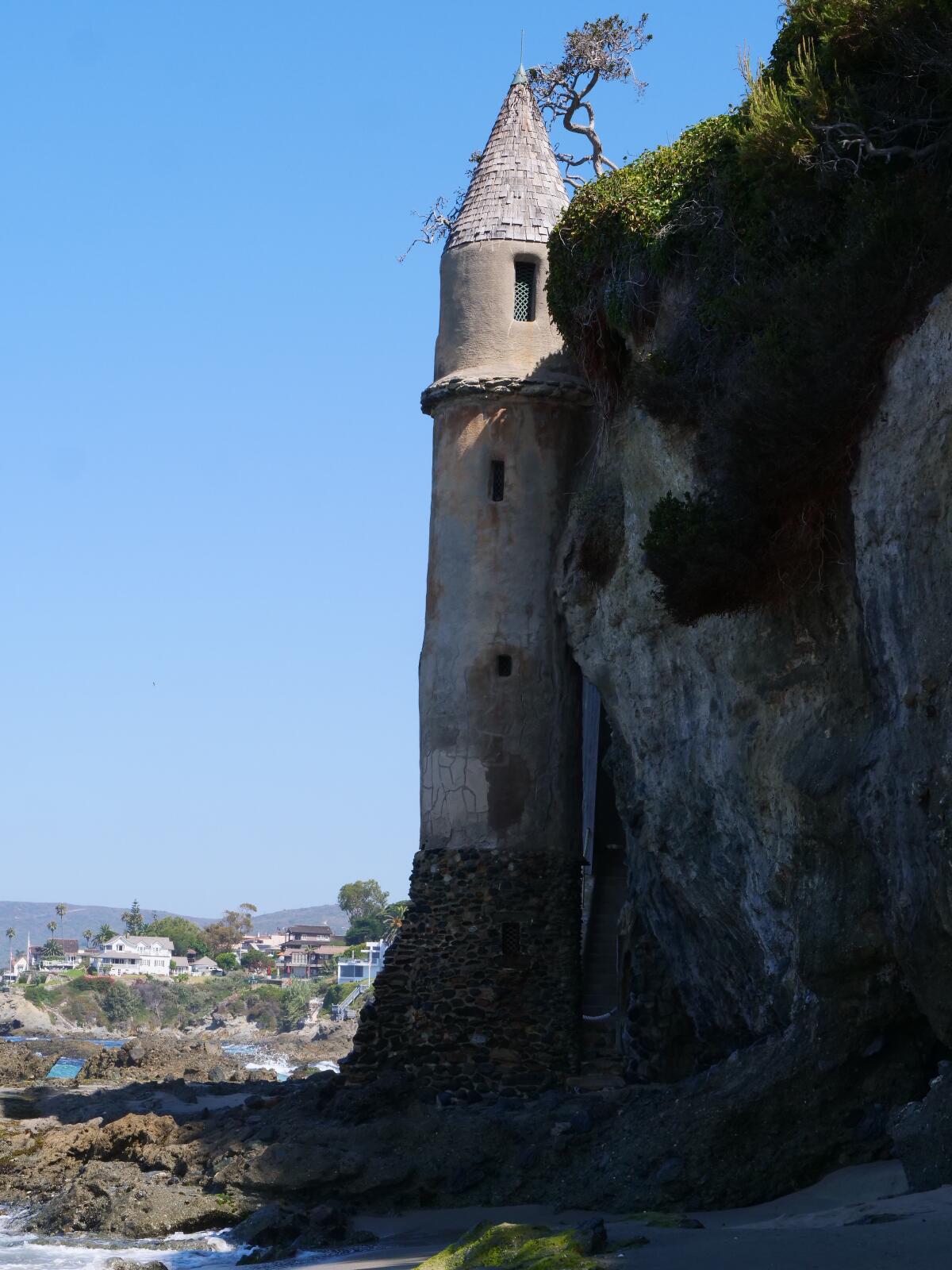
Today’s great photo is from Enrique Lima of Calimesa: Victoria Beach’s Pirate Tower in Laguna Beach.
Enrique writes:
“Over the years our family members have enjoyed visiting this landmark. I haven’t seen anything similar at any other California beach.”
Have a great day, from the Essential California team
Ryan Fonseca, reporter
Amy Hubbard, deputy editor, Fast Break
Check our top stories, topics and the latest articles on latimes.com.
